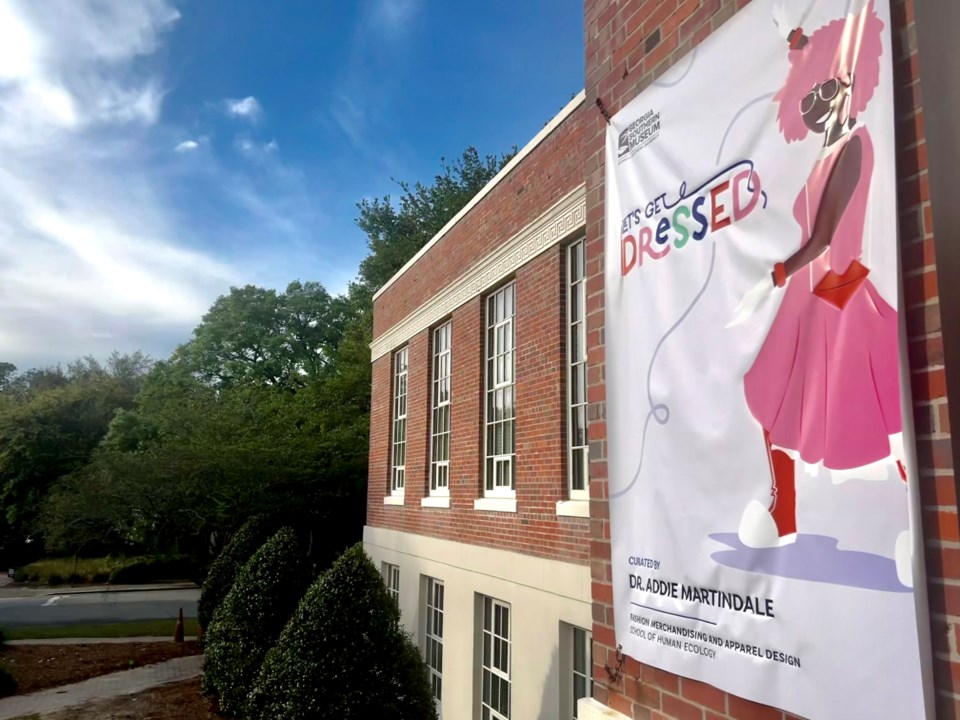The Georgia Southern Museum recently opened its doors to the public for the Let's Get Dressed exhibit, curated by Dr. Addie Martindale from Georgia Southern University's Fashion Merchandising and Apparel Design program. Seniors at the university designed the exhibit, which celebrates the diverse identities of Georgia Southern students, faculty, and staff. The opening reception for the exhibit took place on March 29, 2023, from 5:00pm to 6:30pm.
The exhibit showcases a variety of ways that students, faculty, and staff choose to dress for self-expression. Through the commonality of getting dressed, people are reminded that everyone is an individual with their own unique stories to tell. Each outfit reflects aspects of people's identities, such as ethnicity, gender, religion or culture, ability, and body size. The goal of the exhibit is that by sharing these stories, visitors will be inspired to embrace and share their own identities with the world. All people have wonderful and essential elements of their identity that are worthy of being celebrated.
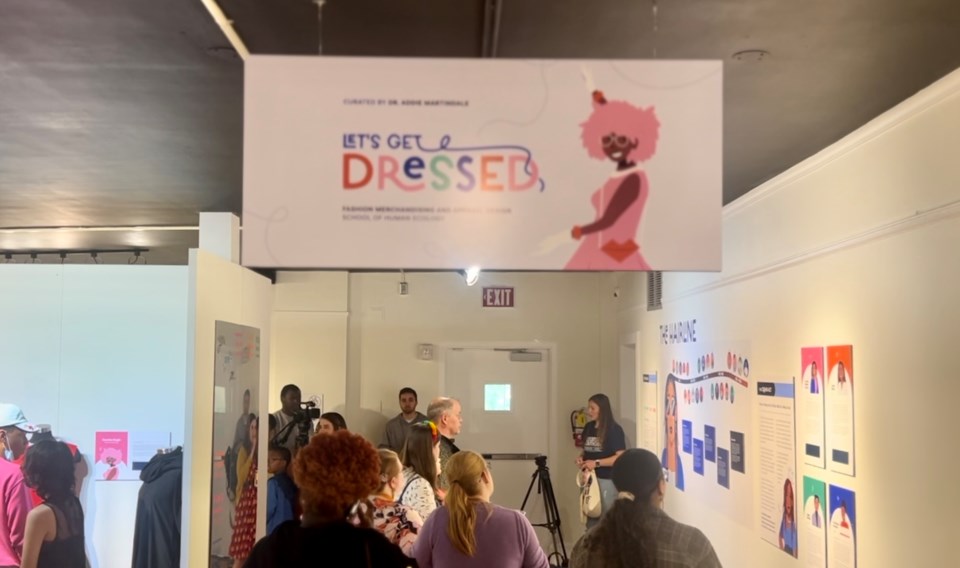
Addie Martindale (she/her) is the event's curator and an accomplished scholar in the field of fashion. As an Associate Professor in the School of Human Ecology at Georgia Southern, she is focused on expanding inclusive practices in the fashion industry and improving functional design for underrepresented populations to increase wearer empowerment. In addition to her research, Dr. Martindale teaches a diverse range of Fashion Merchandising and Apparel Design courses, including FMAD 3230: Dress, Appearance, and Diversity.
Martindale was thrilled by the turnout at the opening reception, noting that the love and support exhibited by the event attendees reflect the changing attitudes towards gender and diversity in the community and the wider country.
At the exhibit, inclusivity was a top priority. Each exhibit included the pronouns of the individual represented and braille signage. Additionally, every display featured a QR code that allowed visitors to listen and learn more about the piece, making the descriptions accessible to everyone. Martindale emphasized that it was important to her that people felt represented by the displays, which included pieces showcasing a variety of body sizes, ethnic and racial backgrounds, and LGBTQ representation. Continuing, Martindale explains that the sections discussing hair stories are a little longer because the need for it emerged during the conversations with those represented and she felt it important that it needed extra focus.
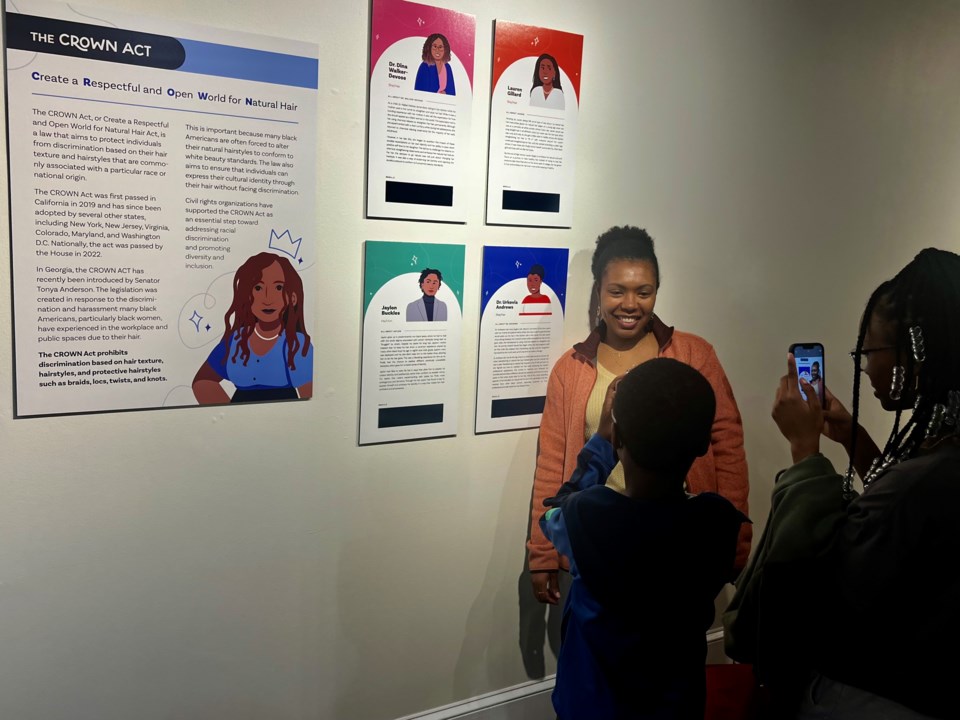
The exhibit featured a section on hair that explored how hairstyles have evolved over time. It also highlighted the significance of The CROWN Act in Georgia, which was recently introduced by Senator Tonya Anderson. The law was created to address the discrimination and harassment that many black Americans have faced due to their hair. The CROWN Act prohibits discrimination based on hair textures, hairstyles, and protective hairstyles such as braids, locs, twists, and knots. This is a vital step towards promoting inclusivity and embracing cultural diversity, as many black Americans, especially black women, have felt pressured to conform to white beauty standards by altering their natural hairstyles.
When asked why it was so important to include students in the promotion of diversity, Martindale shares,
“When I was young they didn’t have sizes for me, and I had to have someone who made clothes for me. Shopping in the plus size section in the 90s was hard. Inclusivity and accessibility are the heart of what I do and unfortunately something I believe fashion tends to exclude. So my experience in fashion has been about providing solutions to give more options. In the classroom, making space for diversity means taking a real look at all of these issues. It means talking with students about how to make the industry a better place and encouraging them to also learn about stigmas and areas of under representation. There is seriously more clothing for dogs than for people with disabilities. The fashion industry caters to a very narrow market. I love the diversity of my students and I still don’t see them represented in the university the way they should be, so I’m always seeking opportunities to have their stories heard.”
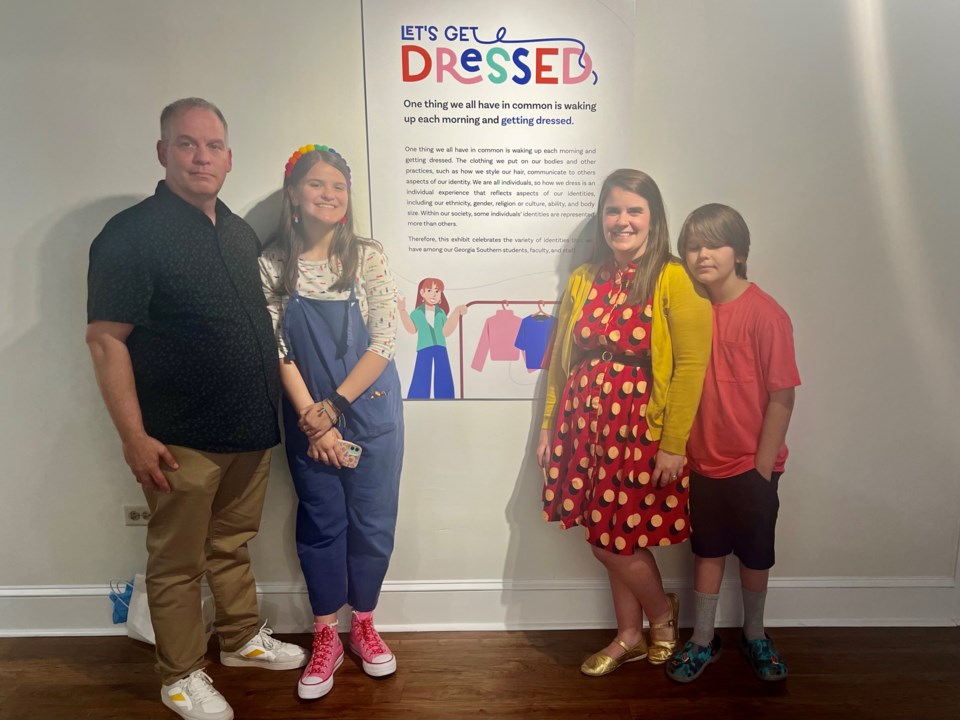
The exhibition was designed by Senior Design students in the Betty Foy Sanders Department of Art. Those named and honored at the reception were Sam Glover, Jaylon Buckles, Johnny Diaz, Evan Hoyt, Brandon Levin, Matt Talley, and Landon Sawyer.
The curator and designers were also sure to thank their professor, Marc Moulton, the Betty Foy Sanders Department of Art, and the rest of their classmates: Marcus Aiken, Jordan Allen, Anna Claire Bailey, Courtney Beasley, Troy Britts, Kenneth Cage, Tania Carrington, Korei Curtis, Erin Dixon, Jacob Fetty, Anna Forbes, Roger Hamelin, Bentley Hendrix, Cierra Horton, Ashlyn Jeffcoat, Landon Jones, Garrett Joyce. Allison Myers, Meaika Pitchford, Maya Pless, Anna Powell, Raven Ross, Mary Shepherd, Christian Simons, Jessica Webb, and Haley Wilson.
Sam Glover (they/them), a senior Graphic Design student, was the primary lead on the project and worked extensively with Martindale to bring the exhibit to life. Glover's responsibilities included developing the color palette and designing the overall look, feel and aesthetic of the exhibit. Additionally, they put the finishing touches on the design by finalizing all the pieces.
When asked about the primary challenges faced while overseeing the project, Glover explained that managing the timeline could be demanding. Balancing the project with other responsibilities, such as work and school, required extra effort. Despite the obstacles, Glover mentioned that leading the project taught them many valuable and positive lessons.
“As a designer during COVID, we didn’t get to produce a lot of physical work. But getting to see this exhibit come to life helped me see I’m capable of much more than I realized. And I learned how much I really love what I do. Getting to see it go from being on a screen, and seeing all the pieces come together. That has to be my favorite thing about graphic design: seeing the production and how it impacts people," Glover shared.
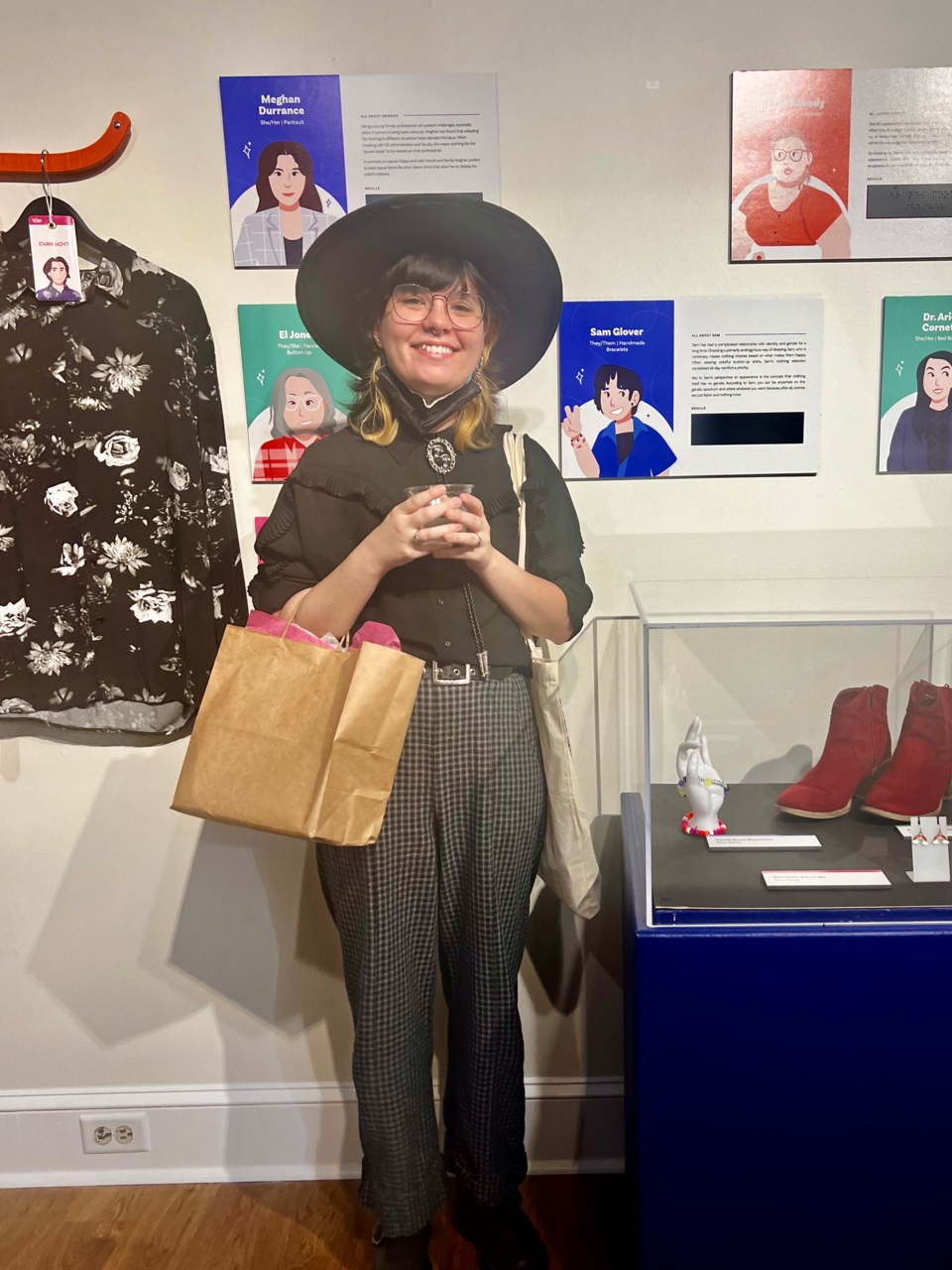
Glover also expressed to Grice Connect that the turnout for the opening reception was overwhelming and unexpected. Although they anticipated many students and faculty members featured in the exhibit would attend, the number of community members present was thrilling.
“It’s really neat to see everyone coming to something like this for the sake of celebrating diversity,” Glover smiled. Also happy to see children present and engaging in the activities, Glover expressed that the exhibit was designed with kids in mind, and the team was sure to include projects, like coloring sheets, to keep them engaged and help them learn about gender and diversity.
Symbolizing Glover's identity as nonbinary, a handmade Kandi bead bracelet was selected for their personal feature in the exhibit, serving as a gentle reminder to be confident in correcting others when it comes to pronoun usage. They primarily dress androgynously and make clothing choices that make them feel comfortable and happy. Glover was joined and supported by partner, Amber, who graduated from Georgia Southern in 2021 with a computer science degree.
Geneisa Ragin (she/her), a senior from Warner Robins, Georgia, was showcased in the exhibit as well. With a childhood passion for vibrant cartoon characters, anime, and video games, she spent much of her early years indulging in these hobbies. Her love for these pastimes continues to this day, as she incorporates them into her everyday life by wearing unique, colorful outfits that bring her joy. Ragin started cosplaying as a way to see herself as a black woman represented in comic books, anime, and cartoon spaces. She created the images she wanted for herself as a child through her cosplay designs. Ragin said her main inspiration for her style is video games from the early 2000s, describing her style as campy and colorful.
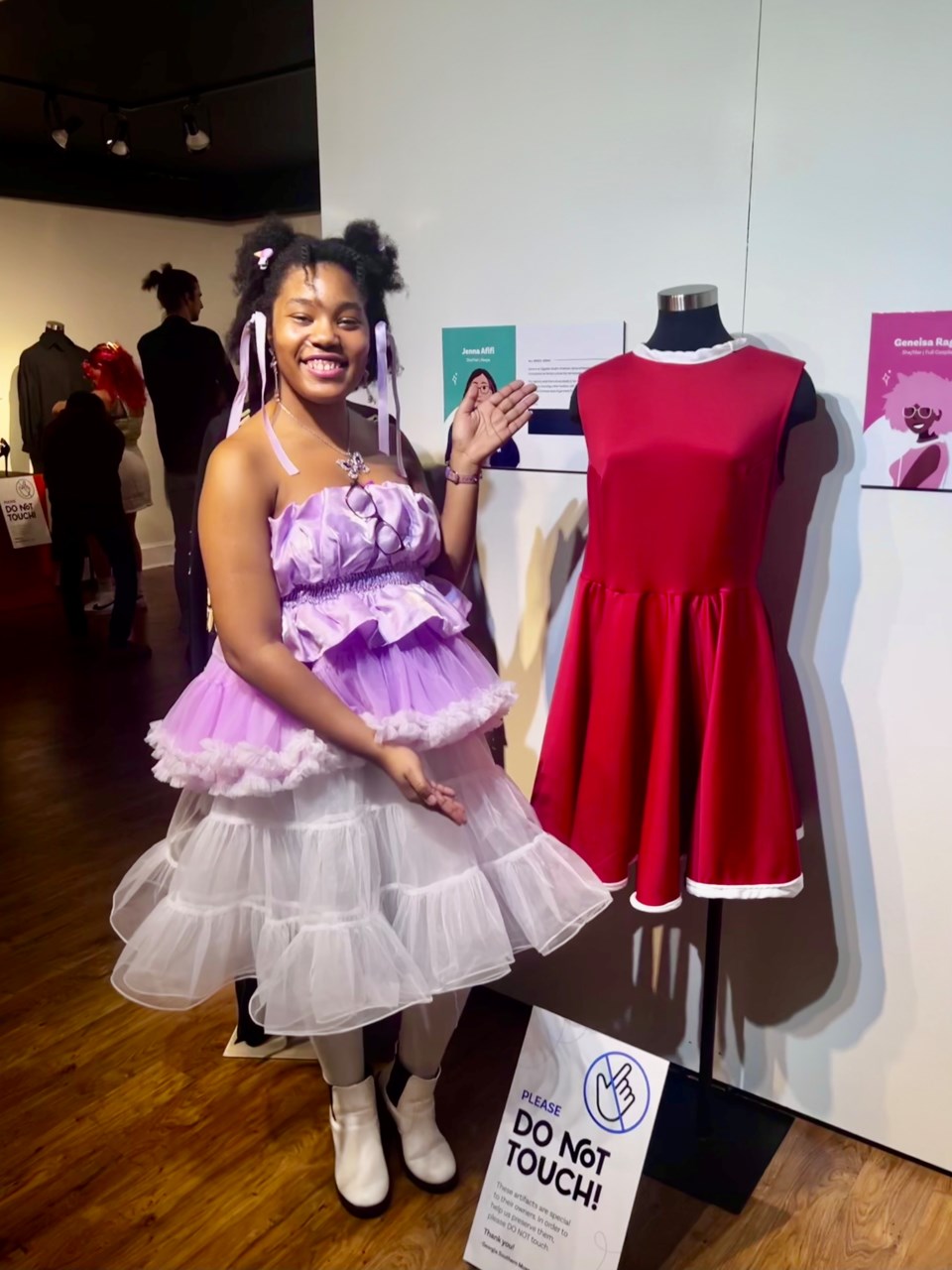
“Dressing up boosts my energy to do what I want to in my day to day. Right now, after graduating my plan is to just focus on cosplay commissions, design, and figuring out myself,” Ragin smiles.
Corbin Orozco (he/him), a senior student of Fashion Merchandising that also participated in the exhibit, expressed that his reason for pursuing fashion is to represent his Hispanic heritage.
“We’re the most underrepresented people in the country despite the large number we make up. There’s just not a lot of Hispanic representation in the media, and I want to play a part in shifting that,” he said.
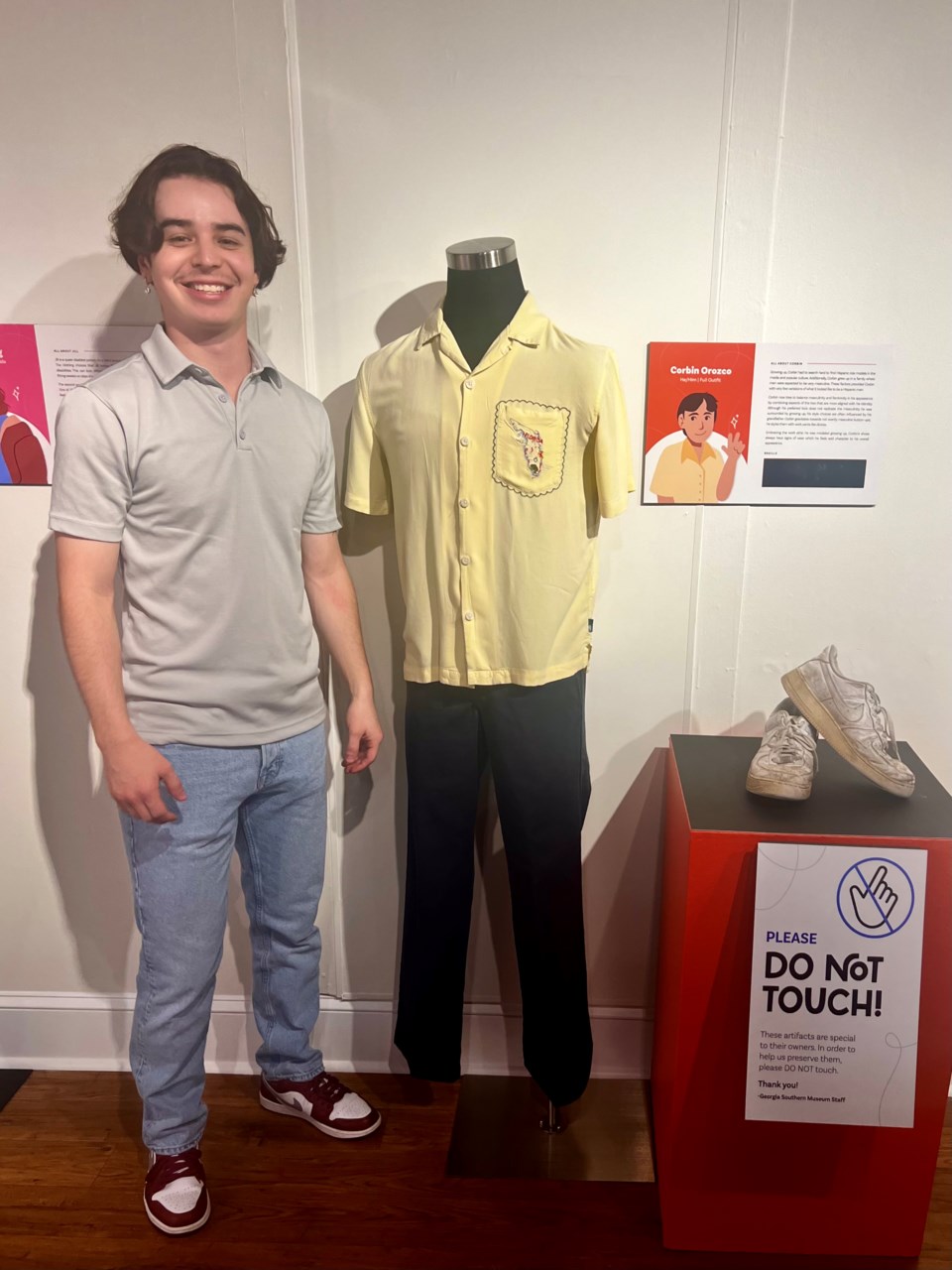
Orozco continues, expressing that not seeing himself in the media doesn’t discourage him, but pushes him to look harder for inspiration, making the work more fun and rewarding. Because of this, Orozco explains that while his culture doesn’t drive him to do what he’s doing, it plays a large influence on his sense of fashion and the way he dresses. Orozco's exhibit is inspired by what he remembered seeing his grandfather wear. Describing the look as comfortable but put together, Orozco highlights that the dirty shoes represent the drive of hard work, and a desire to get a full life’s use out of an item before purchasing something new even when it’s unnecessary. Orozco says his overall style has a masculine feel with a peacock flare.
When questioned about his post-graduation aspirations, Orozco chuckled and replied,
“I don’t know, but wherever I am and whatever I’m doing, I just want to be happy.”
You can view the exhibit at the Georgia Southern Museum on Sweetheart Circle Tuesday to Friday from 9a.m.-5p.m. or Sunday from 2p.m.-5p.m. The museum is closed on Mondays, Saturdays, and university holidays. Admission is $4 per person, with children 3 and under free.

